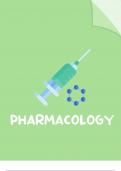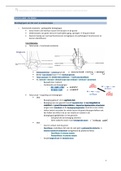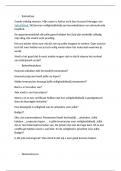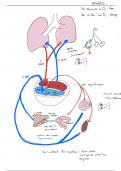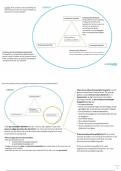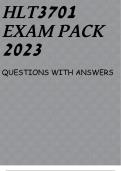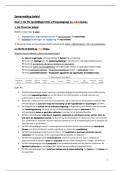, PHARMACOLOGY MED. ADMINISTRATION
THROMBOLYTICS (FIBRINOLYTICS)
6 RIGHTS OF DRUG ADMINISTRATION TYPES OF MED. ORDERS
• RIGHT PATIENT • RIGHT ROUTE • Standing: med. pre-established & approved
• RIGT MEDICATION • RIGHT TIME to give in the absence of HCP or attending.
• RIGHT DOSE • RIGHT DOCUMENTATION • Single: given one time only.
• PRN: given as needed.
• STAT: med. given soon as possible.
ABBREVIATIONS TO
AVOID -> WHAT TO USE INSTEAD
• U --> unit
• IU --> intentional unit COMPONENTS OF MED.
• Q.D., QD, q.d., qd --> daily PRESCRIPTION
• Q.O.D., QOD, q.o.d., qod --> every other day
• Pt. full name
• MS --> morphine sulfate
• Date & time of Rx
• MSO4, MgSO4 --> magnesium sulfate
• Name of med. (generic or brand)
• Trailing zero (Decimal point could be overlooked or
• Strength & dosage
not written) Ex: 5.0 mL --> write 5 mL
• Route
• NO leading zero (Decimal point could be overlooked
• Time & frequency
or not written) Ex: .5 mL --> write 0.5 mL
• Quantity & number of refills
• > sign --> greater than
• Signature of prescribing provider
• < sign --> less than
• cc --> mL
• Write FULL medication name
COMMON MED. ERRORS ALWAYS ask about
• Wrong med or IV fluid allergies during
• Incorrect dose or IV rate
• Wrong client, route, & time
medical Hx interview
• Administration of an allergy-inducing med.
• Omission of dose
• Administration of extra dose
• Incorrect discontinuation of med or IV fluid
• Inaccurate prescribing
• Giving med that has similar name to other med(s)
258
, PHARMACOLOGY
PHARMACOKINETICS A.D.M.E
A - ABSORPTION E - EXCRETION
• Meds. administered from its starting location • Eliminating med primarily through the
to the bloodstream. kidneys. Also excreted by the liver, lungs,
In order from fastest to slowest absorption rate: intestines, & exocrine glands.
IV, IM, SC, ID, PO (oral) • Kidney dysfunction can cause accumulation of med.
• Route and amount of med. affects absorption. in body — TOXIC LEVELS (monitor BUN & creatinine levels).
D - DISTRIBUTION M - METABOLISM
• Transportation of medication by bodily fluids to
• How the medication is broken down. Enzymes
where they need to go
cause meds to become less active or inactive.
What Affects This?
Primarily occurs in the liver, but also in the kidneys,
• Circulation (conditions that hinder blood flow &
lungs, intestines, & blood.
perfusion).
What Affects This?
• Permeability of the cell membrane (certain meds.
• Age (older adults are given smaller doses due to
must go through tissues & membranes to reach
risk of accumulation).
targeted areas).
• Increased Dose on med.
• Plasma protein binding sites (two meds. fighting
• First-pass effect (liver inactivates the first-time
for same binding site to reach targeted area).
med before it reaches the systemic circulation.
Should give med non-enteral i.e. IV).
• Similar Pathways (two meds taken, rate of
metabolism decreases for one or both meds.)
• Poor nutrition
NON-PARENTAL
ORAL (ENTERAL) SUBLINGUAL & BUCCAL
Contraindications: Little GI mobility, No gag reflex, • Sublingual: under tongue
Vomiting, Dysphagia, Decreased LOC. • Buccal: b/w cheeks & gum
• Remain upright (High-Fowler’s) - Med must completely dissolve.
• DO NOT give with interacting foods & drinks (grapefruit). - NO food or drink until med dissolves.
• DO NOT crush time-released & enteric-coated meds.
• Mix crushed med with SMALL portion of food if needed.
• For liquid meds, base of meniscus (lowest fluid line) at
level of ordered dose.
259
, PHARMACOLOGY NON-PARENTAL
TOPICAL TRANSDERMAL
• DO NOT apply with bare hands. • Clean & dry skin before and after use.
• TO apply ointment & cream, use • Place patch on hairless area.
gloves, tongue blade, or cotton • Rotate sites to avoid skin irritation.
swab.
EYE, EAR, & NOSE
INHALATION
Eye:
MDI:
• Place dropper 1-2 cm above the conjunctival sac
• Hold 2-4 cm away from front of mouth or
(inner corner of eye).
completely close mouth around mouthpiece.
• Gent ly close eyes & if blinks during instillation,
• Take deep breath & exhale.
repeat the process.
• Tilt head up, & at same time, press
• Gent ly press on nasolacrimal duct for 30-60 secs.
inhaler & deeply inhale.
• Wait 5 mins if instilling more than one med.
• Deeply inhale for 3-5 secs and hold breath
• For ointment, apply thin layer from inner edge of
for 10 secs.
lower lid to the outer.
• Once finished, remove mouthpiece & exhale.
Ear:
• For adult, pull ear up & outwards. For children, pull
DPI:
ear down & back.
• Follow directions for prepping med.
• Place dropper 1 cm above ear.
• Exhale, close mouth around mouthpiece, &
• Once instilled, gent ly press tragus of ear unless it’s
deeply inhale.
too painful.
• Hold breath for 5-10 secs.
• Remain still for 2-3 mins.
• Once finished, remove mouthpiece & exhale.
Nose:
• Rinse mouth or brush teeth to lower risk of
• Use medical aseptic technique.
fungal infection.
• Breath through mouth & not blow nose for 5 mins.
SUPPOSITORIES
NS & GASTROSTOMY TUBES
Rectal:
• Left lateral or Sims’ position. • To prevent, clogging, flush with 15-30 mL of
• Insert beyond internal sphincter. • Liquid meds recommend & if don’t have,
• Remain still for 5 mins. crush tablets & capsules (but not extended/
Vagina: time-released). NO sublingual meds.
• Lithotomy or dorsal recumbent position. • Completely dissolve crushed meds in 15-30
mL sterile water before administration.
• Place 7.5-10 cm on posterior wall of vagina.
• Remain still for 5 mins. • DO NOT mix meds.
260

